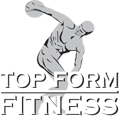Advanced Core Training for 6 Pack Abs
As I discussed in my previous “6 Pack Abs” tutorials, the key factors for revealing your abs are: 1) Training – MRT workouts, alternating high volume and high intensity training; and HIIT on an empty stomach. 2) Nutrition – Reduce carbs (especially high GI carbs and starches like most grains), avoid processed foods, include healthy fats and proteins, stay hydrated, watch your portions, track your caloric intake, and pay attention to peri-workout nutrition. Check out my blog post on nutrition here => Nutrition Guidelines for 6 Pack Abs A good full body training program (like the one I outlined in my previous tutorials) that will burn calories, increase your metabolism, and bring on the After-Burn Affect, along with an intelligent nutrition plan, will help you reduce body fat while maintaining your lean muscle tissue. This is the key to revealing your abs… fat loss through a solid nutrition and fat [...]
